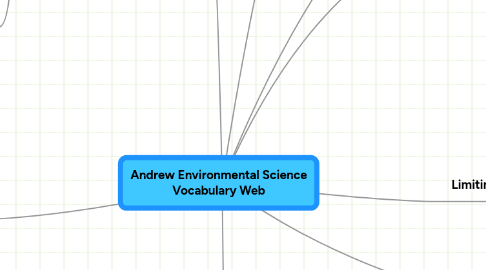
1. Size of Economic Groups
1.1. Organism
1.2. Community
1.3. Population
1.3.1. Carrying Capacity
1.3.1.1. Population Growth
1.3.1.2. Population Growth Rate
1.3.1.3. Exponential Growth
1.3.1.4. S-Curve
1.3.1.5. J-Curve
1.4. Ecosystem
1.4.1. Ecological Succession
1.4.1.1. Primary Succession
1.4.1.2. Secondary Succession
1.4.1.3. Climax Community
1.4.2. Abiotic Factors and Biotic Factors
1.4.2.1. Threatened Species
1.4.2.2. Endangered Species
1.4.2.3. Indicator Species
1.4.2.4. Pioneer Species
1.4.2.5. Hot spots
1.5. Biomes
1.5.1. Desert
1.5.2. Coniferous Forest
1.5.3. Freshwater Biome
1.5.4. Temperate Deciduous Forest
1.5.5. Rainforest
1.5.6. Temperate Deciduous Forest
1.5.7. Marine Biome
1.5.8. Grassland/Savanna
1.5.9. Tundra
2. Biodiversity
2.1. Genetic Biodiversity
2.2. Species Biodiversity
2.3. Ecosystem Biodiversity
3. Water Purification
3.1. Desalination
4. Water pollution
4.1. Runoff
4.2. Point Source
4.3. Non point source
4.4. Organic Pollutant
4.5. inorganic pollutant
4.6. Erosion
4.7. Impermeable surface
5. Food Chains & Food Webs
5.1. Trophic Levels
5.1.1. Producer
5.1.2. Primary Consumer
5.1.3. Secondary Consumer
5.1.4. Tertiary Consumer
5.1.5. Quarternary Consumer
5.1.6. Pentanary Consumer
5.1.7. Decomposer
